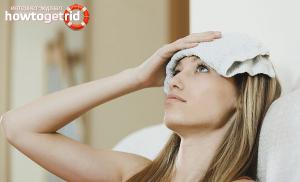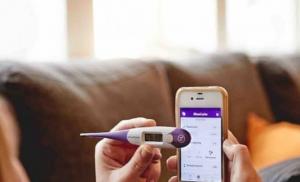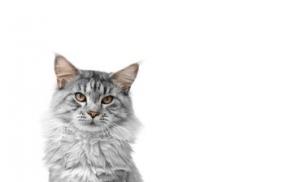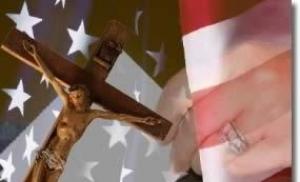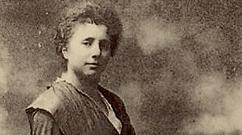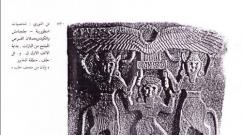One breast hurts when feeding. How to relieve breast pain in a breastfeeding woman on her own? Lactostasis turns into mastitis
There are many causes of chest pain during breastfeeding. Most often, this is the wrong grip of the nipple by the child, cracks, inflammation in the mammary gland.
Throughout pregnancy, the mammary glands prepare to produce milk. The main growth of milk-producing cells occurs in the first months after childbirth. At the same time, the body undergoes a serious hormonal restructuring. He no longer needs to provide the child with useful trace elements, oxygen and protect against infections.
Pain during lactation can be natural or pathological.
In the absence of diseases, the chest hurts when:
- injury to the nipples - the nipple in the first month is very sensitive and needs special care, as the likelihood of cracks and inflammation increases;
- a rapid influx of milk - sensations depend on individual pain sensitivity, the lower the pain threshold, the stronger woman feels pain during flushes of milk.
The causes of pathological pain during lactation must be known in advance.

These include:
- inflammatory processes and cracking of the nipple, followed by their infection with bacteria and fungal microorganisms;
- development of mastitis;
- lactostasis (stagnation of milk in the milk ducts with their subsequent blockage);
- mastopathy is a common disease female breast but not associated with breastfeeding.
It is important for a woman to learn how to correctly characterize pain in order to understand why it appeared. This will allow timely detection of dangerous pathologies and cure them at the initial stage. Any pathology is easier to prevent by providing the necessary breast care during lactation and following the recommendations of doctors.
Incorrect latch on the nipple
It is considered the most common cause of pain. Young and inexperienced mothers cannot always attach the baby to the breast correctly. As a result of this, the mammary gland hurts a lot, cracks and inflammation appear in the nipple area.

When feeding, the child swallows a lot of air, he has problems with the tummy, and mothers quickly turn off breast-feeding. Thus, not giving the child the necessary mother's milk, and causing problems during lactation associated with the lack of attachment of the baby to the breast.
To properly attach the baby, you must follow the following recommendations:
- The baby should open his mouth wide. This will happen reflexively if you draw the nipple along the lower lip, trying to push it away.
- The baby's head should be at the level of the nipple. With proper grip, only a small part of the areola remains visible, while the nipple is located deep in the oral cavity, so it is impossible to injure it.
- If the baby is unable to grab the nipple, you need to help him. For this thumb is located on top of the halo, and the index is below, a fold is formed, the nipple is inserted into the baby's mouth. After that, the fold straightens out, and the nipple takes the right place.
If the baby grasps the nipple correctly, but the chest still hurts, it is worth consulting with a pediatric dentist to determine if there are any pathologies of the upper palate or tongue. It is also necessary to carefully monitor the process of lactation, regularly observing the time of feeding and the number of times the baby is attached to the breast.
Pain with cracks
Injury to the nipple brings a lot of discomfort. To prevent this problem, you need to know why cracks appear.
They occur in several cases:
- when not proper attachment baby - when the nipple is sandwiched between the gums, and the areola is located outside;
- in the presence of infection - the pain is accompanied by burning and itching, it is felt not only during feeding, but also in between them;
- excessive breast care - advice from friends about the thorough treatment of the mammary glands with a soap or vodka solution not only provokes overdrying of the skin and increases its sensitivity, but also contributes to the appearance of severe irritations;
- in case of improper termination of feeding - you need to take the nipple out of the baby's mouth very carefully, so as not to injure the nipple, you need to wait until the baby eats and releases the breast itself, but if this does not happen, you can remove the breast and stick the little finger into the mouth;
- frequent use of a breast pump - abuse of pumping also causes irritation of the nipple and the appearance of cracks, you need to pump slowly, observing the rules of hygiene.

Cracks heal with the help of special ointments and creams, but you can coat the nipple with your milk several times after feeding. Beforehand, it is better to consult a doctor in order to accurately determine the cause of the appearance of cracks and learn how to prevent this problem.
Thrush
A common cause of pain during lactation is the defeat of the injured nipple by fungal microorganisms. In addition to the fact that the breast hurts a lot, the woman feels itching and discomfort.
If the thrush has spread to the milk ducts, the pain during feeding becomes unbearable. In addition, the baby can become infected from the mother. In newborn babies with a weak immune system, the fungus can affect not only oral cavity, but also digestive tract in particular the intestines. Such diseases are very dangerous for the child and difficult to treat, especially in advanced form.
It is necessary to diagnose thrush as soon as possible and begin treatment in order to protect yourself and your baby from the effects of fungi.
Laktostasis and mastitis - inflammation in the mammary gland
Manifested by blockage of the duct. At the same time, the alveoli noticeably thicken, the mammary gland hardens, and breastfeeding is accompanied by pain and discomfort. A characteristic manifestation of lactostasis is breast hyperthermia.

With such a diagnosis, you should not stop feeding the baby, on the contrary, the number of feedings should be increased, then the breast will become soft. Warm compresses will help reduce pain, but will not replace the treatment prescribed by the mammologist.
If you do not treat lactostasis and start it, a woman develops mastitis. This is an inflammatory disease that affects the mammary glands and makes breastfeeding impossible. Stopping lactation is carried out artificially, and can take a long time.
The body temperature rises greatly, pus begins to form, which is removed with the help of surgery.
Many new moms complain when they visit the doctor that they have breast pain during breastfeeding (HB). There can be many reasons for this. Therefore, the main task of the doctor is to determine the one that led to the development of this disorder.
What causes breast pain during lactation?
The main explanation for why breasts can hurt during breastfeeding is. This term in medicine means a violation of milk secretion, i.e. blockage of the mammary ducts of the breast. It will not be difficult for the mother to recognize him herself.
As a rule, with this violation, during palpation of the mammary gland, a small tubercle or nodule is palpated. If the young mother does not take action in time (breast massage, physical exercises), then lactostasis can turn into mastitis.
With the development during breastfeeding, a woman's temperature rises, and her breasts begin to hurt. In most cases, the nature of the pain is pulsating. This disease is caused by the addition of an infectious process. Usually the pathogen penetrates through cracks in the nipples, abrasions. The main symptoms of such a disease are the appearance of swelling, swelling of the chest, redness of the skin, the presence of seals, the chest becomes hot to the touch.
In cases where the chest hurts with GV, and there are no seals and swelling, the cause of this symptom may be a rush of milk directly during feeding. At the same time, women complain about the appearance of a feeling of fullness in the chest, heaviness. In such cases, to avoid stagnation, it is necessary to express the breast after each feeding of the baby.
In addition to the above, chest pain during lactation can be observed due to a violation of the rules of application. This happens quite often, especially with young mothers. To exclude this, it is necessary to adhere to the recommendations that were given to the woman in the hospital.
What to do if the chest hurts with GV? In cases where a nursing mother is sure that milk stagnation is the cause of the pain, it is necessary to massage the breast. This exercise also helps to cope with this problem perfectly: with your hands in front of you, bend them at the elbows, and fold your palms into the castle. Place a small ball between your palms. Gradually squeeze the ball, increasing the effort. You will feel how your pectoral muscles tighten, putting pressure on the mammary glands and helping to restore the patency of the ducts.
In cases where a nursing mother is sure that milk stagnation is the cause of the pain, it is necessary to massage the breast. This exercise also helps to cope with this problem perfectly: with your hands in front of you, bend them at the elbows, and fold your palms into the castle. Place a small ball between your palms. Gradually squeeze the ball, increasing the effort. You will feel how your pectoral muscles tighten, putting pressure on the mammary glands and helping to restore the patency of the ducts.
Thus, a nursing mother should know why her breasts can hurt with breastfeeding, so as not to wonder if this is mastitis, but to take the necessary measures in a timely manner.
Often nursing mothers complain: "When I breastfeed, my chest hurts." There are many reasons for this pain. Some problems can be solved by the mother herself, and with the rest it is necessary to consult a doctor.
What can cause pain while breastfeeding?
Physiological state
When the breast of a nursing woman hurts immediately with the start of feeding, this happens due to the filling of the breast with milk. This is how the hormone oxytocin works. It stimulates the muscle cells in the breast to increase milk production. Oxytocin is released during feeding the first few days after birth. Later, when you just think about feeding your baby, the hormone is released. You may even find that the milk flows out quietly without feeding.
different women feel this physiological reflex in different ways. You may feel:
- slight tingling or pinprick or needle-prick sensations;
- strong pressure in the mammary glands with little pain and sometimes discomfort.
Over time, a woman gets used to breastfeeding, and the discomfort and pain become less noticeable.
nipple shape
Inverted, flat, or very large nipples can cause pain when breastfeeding. Some women have congenital nipples that make breastfeeding difficult. Nipples with some diseases or with stagnation of milk and swelling of the mammary gland become flat. But you should know that during pregnancy you should prepare your nipples so that the baby can grab them, even when they are retracted. Often flat and inverted nipples become protruding when properly attached to the breast and under the influence of the baby's suckling.
Nipple problems
Many mothers note that the nipples are tender and when the baby is attached, the chest hurts when feeding. All this, with undeveloped nipples, can lead to cracks that will make it impossible to feed the baby normally, and can also cause mastitis. Breastfeeding should be comfortable. In this case, it is necessary to adjust the correct grip of the nipple by the child, choose a comfortable position and develop the nipples even before the baby is born. And complaints like "I'm breastfeeding, my nipples hurt" should not be a young mother. 
A good grip of the baby's mouth on the nipple and areola is essential. If your baby only sucks on the nipple, it is very important to gently remove it from the baby by placing a clean finger at the corner of the mouth and try again to insert the haloed nipple into the newborn's mouth. Round and tense nipple - this is how it should be before and after feeding.
If the chest hurts, I feed, what should I do? Can I skip feedings because of pain? All these questions should be asked to the obstetrician in the maternity ward. Delaying feeding can lead to more pain and harm to you and your baby.
Try changing position each time you breastfeed. In this case, it is possible to choose the most comfortable position. This will help to regulate the pressure on certain areas of the breast and make feeding comfortable.
Milk production in large quantities
Some mothers who produce a lot of milk complain that their breasts hurt when feeding. At the same time, such mothers feel painful attacks deep in the chest when applying the baby.  it disease state usually disappears within the first three months of breastfeeding. If the baby latch on correctly every time and suckles well, milk production should level off to meet the baby's needs.
it disease state usually disappears within the first three months of breastfeeding. If the baby latch on correctly every time and suckles well, milk production should level off to meet the baby's needs.
blockage of the ducts
When feeding, sometimes there is a seal in the chest in the form of education. It is not always accompanied by fever or other symptoms. This happens when part of the breast cannot be released from milk due to inflammation or blockage of the milk duct. Subsequently, this can lead to mastitis.
Feed every two hours at this breast. This helps loosen the cork and the milk begins to flow freely.
You can use a light chest massage, starting from the sore spot. First in a circular motion, and then longitudinally towards the nipple. Use a warm compress on the affected area.
Thrush
A thrush or fungal infection can develop in your baby's mouth and spread to the nipples. This occurs when the balance in the mother's body is disturbed due to various infectious diseases, HIV, diabetes, anemia, while taking antibiotics and steroids. The moist, warm, unprotected environment of a baby's mouth while suckling is the perfect place for a candida infection to develop and multiply.
Other signs of a fungal infection are pink, shiny or bright pink blistered nipples, itching and cracking. There may be shooting pain deep in the chest during or after feeding. 
Sometimes infection with candida can also damage the milk ducts - the channels through which milk flows to the nipples, and therefore the chest hurts during HB (breastfeeding).
Unlike constant, pain with thrush occurs both when feeding a child, and after. Although some doctors doubt that it is the milk ducts that can be affected. Basically, in this case, only the nipples suffer.
If the chest hurts with breastfeeding, and the child begins to refuse the breast, you need to see a doctor to get advice.
Candidiasis can take several weeks to heal, so follow these tips to avoid spreading the infection:
1.Frequently change disposable pads.
2. Bra should be clean and ironed every day.
3. Wash your hands and your child's hands as often as possible.
4. Pour boiling water daily over all parts of the breast pump that touch milk.
5. Make sure family members do not have thrush or other fungal infections. If they do have symptoms, make sure they get treated.
Stagnation
In the first few days after the baby is born, the breast fills with milk, and there is a significant rush of blood to the breast, which makes the tissues swollen.  This can cause the breasts to increase significantly in size and become hot and sore. Milk-producing cells in this case become more voluminous, and the skin of the mammary glands becomes red and shiny.
This can cause the breasts to increase significantly in size and become hot and sore. Milk-producing cells in this case become more voluminous, and the skin of the mammary glands becomes red and shiny.
This is completely normal and is an adaptation of the body so that the child does not need food and fully satisfies his feeding needs. After the newborn begins to eat regularly by the hour, the mammary glands will regulate and produce the required amount of milk. Discomfort in this case disappears. If it doesn't, contact your midwife or doctor.
lactostasis
If there are complaints like “I am breastfeeding, my chest hurts during feeding and in the intervals between breastfeeding”, then this may be the cause of lactostasis - overflow of the mammary glands. Most often, this condition is observed in the first days after the start of feeding.
This is normal for the breasts, however they get bigger, heavier and start producing more milk. Sometimes this overflow can turn into congestion, then the chest becomes large and painful. You may also experience breast swelling, redness, warmth, throbbing, and flattening of the nipple. This condition is sometimes accompanied by a low-grade fever, and it can be confused with a breast infection. In order to get rid of this condition, a good pumping of the breast after feeding is required.
Mastitis
If the chest hurts and the temperature of the nursing one, and the mammary glands become inflamed and painful, this may mean that lactational mastitis has developed. To keep breastfeeding a child, you must immediately consult a doctor and begin treatment immediately.
When mastitis occurs, the following symptoms occur:
- only one mammary gland is affected;
- the chest is tense;
- hot to the touch;
- there is pus or blood in the milk;
- red stripes or spots are found on the chest;
- symptoms develop within hours.
This can happen if there was contact with a family member who has a cold or an infectious disease. 
“My breasts hurt, I feed my baby with a bottle and a pacifier” is the wrong approach to breastfeeding. Mastitis is easy to distinguish from lactostasis: the latter disappears after 24 hours during the massage. With mastitis, the doctor prescribes antibiotics and absorbable agents. But even if you are taking medication, you must continue to breastfeed during treatment. it the best option for you and your child.
To solve the problem of “I am breastfeeding, my chest hurts”, complete relaxation is required when applying. This can help manage discomfort. In some cases, with severe pain, you can take "Paracetamol" or "Nurofen" to relieve pain.
If the breast is full and the baby is not able to fully latch onto the nipple, then it is necessary to try to start feeding on the breast that is more comfortable for the baby, or use a breast pump until the baby is comfortable enough.
Try using warm, moist breast compresses before feeding to help milk flow smoothly into your mouth. After feeding or pumping, cold wet compresses, cooling gels, or cabbage leaves can be applied to the breasts. Kale leaves can reduce swelling, although there is no conclusive evidence for this.
A breast that is too full can also make breastfeeding impossible. If your baby refuses to breastfeed, chokes on too much a large number milk, try this technique:
1. Attach the baby to the breast as usual.
2. When you feel that milk is coming in strongly, carefully remove the nipple from the baby's mouth and express some into a jar.
3. Reattach the baby to the breast when the flow slows down a bit.
4. The more often you put the baby to the breast, the faster the required amount of milk will normalize and be produced, so that both you and the baby can feel more comfortable.
If breast pain in a nursing woman between applications and does not go away within a few days, you should consult a doctor to rule out causes that need treatment, such as thrush or mastitis.
What else can cause chest pain?
After the birth of a child, the chest constantly hurts. The causes of this symptom may have nothing to do with the act of breastfeeding. It could be:
1. An uncomfortable bra. For normal filling of the mammary glands, it is necessary that the side seams are on the side, and not on the chest, and the cups should not squeeze or press the mammary glands. 
2. Premenstrual soreness. If menstruation begins during the feeding period, the breasts may be painful. Basically, discomfort appears in the upper outer part. chest and in the armpits. This pain begins with the onset of menstruation and may last for a week or two. Relief occurs after ovulation occurs in the middle of the cycle.
3. The chest hurts in nursing and with fibrocystic mastopathy. It is harmless, and with this disease, you can not refuse to feed the baby. For any discomfort, it is better to visit a doctor to rule out possible reasons pain.
Breastfeeding can be difficult at times, especially in the early days. Often, from women who gave birth to their first child, one can hear complaints: I am breastfeeding, my chest hurts. But it is important to remember: you should not solve the problem yourself.
The maternity hospital will teach you how to breastfeed and help you make breastfeeding a joy. And yet, many women may have certain problems.
After breastfeeding, it is required to express a few drops of milk and gently rub it into the nipples with clean hands. Human milk has healing properties, soothes and softens the nipple and areola. In addition, you can take an air bath and wear a bra with soft cotton pads.
Avoid wearing bras or clothes that are too tight on the breasts and put pressure on the nipples.
Avoid using soaps or ointments containing astringents and other chemical substances that affect the nipples. Do not eat foods that make milk bitter for the baby. Washing with warm boiled water- this is all that is needed to keep the nipples and breasts clean.
When your baby is 6 weeks to 2 months old, you may feel that your breasts are not completely empty after a feed. This is fine. A newborn baby can suckle for only five minutes at first. This means that you and your baby are simply adjusting to the breastfeeding process.
Make sure your baby takes the breast well and suckles actively. Feed frequently and on demand, and let your baby decide when to stop feeding. This will help eliminate complaints such as "chest pain". The causes of this symptom may be different.
Offer both breasts at every feed. The baby will not give up the breast until he is full. A second breast should be offered when the baby is inactive or stops suckling.
A lot of milk
Some mothers drink plenty of fluids to make sure there is enough milk. But with full breasts, feeding can be stressful and uncomfortable for both mother and baby.
One breast should be used for each feeding. Only when the baby is worried or refuses to offer a second.
If the other breast feels unbearably full before you are ready to feed, it is necessary to express some milk for a few minutes to relieve the pressure. You can also use a cold compress or towel to help reduce discomfort and swelling.
Try positions that are more comfortable for feeding. This improves milk flow. Can be used for feeding lying position on the side or sitting with a chair substituted under the leg.
Feed frequently on breasts that are full to free them and prevent lactostasis.
Avoid using a pacifier bottle if possible.
A breastfeeding mother should get enough rest, eat right and drink enough fluids, but do not overdo it!
The composition of breast milk is unique, and more and more research confirms its irreplaceable benefits for the full development of the child. Breastfeeding women often suffer from chest pain. To get rid of it, mom should identify the cause pain.
Nursing woman Nursing mother Laktostasis
striae on the chest
when breastfeeding, almost half of women begin to sleep worse
teeth problems in moderation
Reasons for the development of the disease
Consider the most common causes Why can my chest hurt?
- The pain is caused by cracked nipples. To avoid them, you need to carefully remove the baby from the mammary glands after the cessation of the sucking reflex. Also, with improperly selected hygiene products, the skin of the chest dries out, itching appears. It is necessary to use special moisturizing creams and lotions without alcohol. With deep cracks, doctors advise interrupting feeding for several days.
- The chest can hurt in the initial period during lactation due to swelling of the mammary glands. This usually goes away after a couple of weeks.
- Unsuitable, tight underwear.
- Stress and intense physical activity.
- Expressing milk for a long time (without sucking by the baby) can cause pain and tingling in the chest.
- Irregularly shaped nipples (small, flat) can cause pain. It is recommended to massage the nipples a few weeks before giving birth. To do this, the nipples are carefully pulled out by hand and this procedure is repeated every day for several minutes.
- Incorrect posture while feeding. Usually, feeding is taught in the maternity ward.
- Inflammation of the milk ducts can cause chest pain.
Causes of compaction of the mammary glands
Ideally, breasts that are soft to the touch without the formation of bumps during feeding should not hurt and cause concern to the woman.

Lactostasis is a fairly common occurrence in a nursing woman.
Breast seals can happen due to a number of factors. This problem accompanied by:
- severe pain;
- redness and irritation of the skin;
- change in body temperature.
Breast lumps during breastfeeding may appear due to the following reasons.
- Milk stasis, which forms lumps, causes pain. To alleviate the condition, you need to express the remaining milk from the diseased breast. It must be remembered that you should never stop feeding during the stagnation of milk, because the child can help dissolve the resulting stagnation.
- Blockage of the milk ducts causes pain. It happens in the first 2 months after childbirth due to the wrong feeding regimen for the baby, an uncomfortable feeding position.
- stress and exercise stress cause inflammation of the breast.
Can massage be done?
Women immediately after childbirth do not pay due attention to expressing milk after feeding. Performing massage is one of the means of preventing milk stagnation during breastfeeding, the appearance of inflammatory processes.

Mom needs to be very careful about her breasts - you can’t crumple it too much
The correct technique for its implementation can be shown by an obstetrician-masseur in the maternity hospital.
- During the massage, it is customary to use natural vegetable oils and creams. An improperly selected cream can cause the breasts to itch during breastfeeding.
- Massage movements with the hands are carried out in the direction from the nipples under some pressure, dispersing the fluids from the milk ducts.
- Painful areas and places of seals are carefully massaged.
- Breast massage stimulates lactation, so it can be used as the right way in order to prepare the breast for breastfeeding.
- The duration of the massage is usually about 15 minutes, it should be performed every day after feeding the baby.
Symptoms of the disease

Lactostasis must be treated, as it can become the basis for a more serious disease.
In some cases, if measures are not taken in time, pain in the area of the mammary glands can lead to inflammation of the milk ducts and soft tissues. With untimely treatment, pus may form. Lactostasis can become a trigger for such a serious disease as mastitis.
Symptoms that require immediate medical attention:
- acute pain does not stop within 1 week;
- increase in body temperature;
- a significant increase in one breast in size;
- general malaise of the body, chills, weakness;
- an increase in axillary lymph nodes;
- the formation of bumps in the mammary glands that do not go away after massage and pumping.
Diagnosis and treatment methods
If a nursing mother has a chest pain and rises heat when breastfeeding, she needs to see a mammologist.
After palpation of the mammary glands, the patient is sent for the delivery of such tests as:
- general blood analysis;
- study of milk from a healthy and diseased gland;
- bacteriological urinalysis.

It is necessary to pass the necessary tests
If the results of the analysis revealed a change in the acidity of milk, then this clear sign inflammation. The doctor may also refer additional holding Ultrasound to clarify the diagnosis. This is necessary to determine the phase of the disease.
Young mothers during feeding often face a disease such as mastitis - inflammation of the mammary gland due to bacteria entering the soft tissues. The causes may be the appearance of microtraumas and cracks in the nipples, through which pathogenic microorganisms, such as Escherichia, Pseudomonas aerugenosa, Klebsiella, penetrate the milk ducts.
Also improper hygiene and injury female organ can cause this disease. Bacteria, getting into the milk streams, begin to actively multiply, provoking pain and inflammation.
More often, only one breast is affected, and it can become larger than the other when breastfeeding. Therefore, breastfeeding is carried out by healthy breasts, and affected by inflammation must be decanted to prevent bacteria from entering the baby.
Early detection of the disease should be treated as follows:
- expressing excess milk after each feeding;
- applying ice for a few minutes after pumping;
- treatment of wounds on the nipples with healing creams;
- massaging the painful area.
If a woman has a sore breast during breastfeeding, then she is prescribed special medications. The most effective ones.
| Name | Action spectrum | Average cost in Russia |
| Dostinex | The drug for long time reduces the amount of prolactin. It should be taken if you want to completely stop the production of milk in the mammary glands. Usually these are advanced forms of mastitis with the formation of pus. | 589 r. |
| Amoxiclav | An antibacterial drug, prescribed to destroy pathogenic microflora, destroys most of the known bacteria that cause mastitis. | 99 r. |
| Ceftriaxone | Strong remedy newest generation, prescribed for relapses and bacterial resistance to other antibiotics. | 47 p. |
Find out why not and go.
Pain during breastfeeding can overtake a woman immediately after the birth of the crumbs. Another option is also possible: it would seem that breastfeeding has been established for a long time, and suddenly mommy begins to feel soreness in the mammary glands.
In any case, enduring discomfort is definitely not the best option. Not only you, but also the baby will suffer from this sacrifice. Therefore, it is urgent to find out the reason why the chest and nipples hurt when feeding the baby, and proceed to urgent treatment measures.
Around breastfeeding, there are many speculations, true and not so. Among the most common questions moms ask is “Does it hurt to breastfeed?”. And many women with a decent amount of motherhood experience will respond positively to it. Indeed, for some mothers, breastfeeding suddenly turns into a nightmare: it starts to deliver so much discomfort.
You can hear both different points of view about the cause of this phenomenon, and about the method of treatment. We talked about the professional view of doctors on why the chest often hurts when feeding. Of course, we did not forget to find out what mommy should do in such a situation.
Where does it all start
What do you associate with the first days and weeks after childbirth? You can hear different answers from mothers, because for each woman these experiences and feelings will be individual. However, all these memories will be touching, tender and exciting.
When you are just starting to get to know your baby and adapt to the responsible role of a mother, you really want nothing to distract from this. Of course, breast pain during feeding will overshadow such an important period in your life. When breastfeeding is just beginning to improve, this problem is far from uncommon.
If the breast of a nursing mother hurts, you need to understand the cause of this problem as soon as possible and eliminate it immediately. Why is delay dangerous? The fact is that an inexperienced mother and her baby are only learning the basics of breastfeeding, and they are not immune from innocent mistakes. If you do not attach due importance to the fact that the chest or nipples hurt during feeding, then this can be fraught with serious consequences.
But still, sometimes painful sensations are temporary phenomena, and they will only symbolize adaptation to breastfeeding. To understand that there is no cause for concern, the following symptoms will help you:
- tolerable pain in the nipple will be accompanied by the appearance of small cracks on them - they will be shallow and will soon pass;
- chest pain during feeding accompanies you only when the baby grabs the nipple, and when sucking itself, the discomfort recedes;
- sometimes a characteristic white coating may form, which quickly turns into a thin crust and disappears painlessly.
When only these symptoms appear, you can not worry. If it's all about adapting to breastfeeding and the pain does not increase every day, then after a few days you will forget about the undesirable phenomenon.

What if I'm not feeding correctly?
If a mother begins to learn about breastfeeding, and her chest hurts at the same time, she involuntarily wonders if she is doing everything right. And if a woman cares about such a situation, that's great! This means that if errors are identified, they will be corrected, and everything will soon return to normal.
A rare lucky mother among mothers rejoices that from the very first day after childbirth, breastfeeding began to occur without any complaints. More often, the addiction of mother and baby to an unfamiliar process is accompanied by temporary painful symptoms.
A little higher, we found out when this should not cause alarm. But if the pain does not recede, it makes sense to look for its cause in the wrong feeding technique.
So, if your breasts are constantly hurting while breastfeeding, pay attention to how you feed your baby. You have the principles correct technique :
- the baby captures the entire areola, and not just the nipple;
- his mouth is wide open, while his lips are drawn back;
- the tongue is located below the areola, while covering the lip and lower gum;
- the body is pressed against the mother;
- underlip slightly turned outward;
- the baby's face is directed towards you, and the nose is opposite the nipple;
- his head and body are in a straight line.
During lactation, one of the most important knowledge is the ability to properly attach the baby to the breast and feed it correctly. In many maternity hospitals, inexperienced mothers are helped to master this science. But if you weren't provided with this service, or if you forgot what they told you about, we advise you to contact breastfeeding experts or watch an educational video.
Among the most popular reasons
Establishing breastfeeding and mastering its correct technique can save a woman only in the early stages after childbirth. In the event that chest pains in a nursing mother do not leave or even increase, you need to look for the cause in something else. Among the most popular problems experts call:
- lactostasis;
- excess milk;
- injured nipples or cracks on them;
- clogged milk duct;
- a sharp break in feeding;
- mastitis or mastopathy;
- vasospasm;
- anatomically incorrect nipple;
- too tight underwear;
- thrush in the chest area;
- abrupt interruption of the feeding process;
- wrong posture.
On your own, you can only guess at the reason why it hurts to breastfeed. The doctor should point out the true essence of the problem to you, because sometimes such symptoms are a disease, such as lactostasis or mastitis.

If lactostasis "suddened"
When the chest hurts during lactation, the cause should often be sought in lactostasis - milk stagnation. Often this is added: swelling, engorgement, tightness in the chest and fever.
Sometimes the breast with lactostasis hurts very much, and the mother, in order to somehow escape from this nightmare, decides to nullify the feeding. This approach only exacerbates the situation chief assistant in the fight against lactostasis - this is the baby himself. Frequent and fairly long feedings the best way will act against the stagnation of milk.
A few more effective ones can enhance the effect. ways to win over lactostasis:
- relieves pain massage of the mammary glands before feeding;
- when the baby eats, periodically change his position;
- after feeding, a cool compress will be optimal;
- if you feel that the mammary gland is not completely empty, express the remaining milk.
If the doctor diagnosed you with lactostasis, you should not be upset, and even more so stop breastfeeding. With a set of simple measures, the problem will quickly recede.
Lactostasis turns into mastitis
If a mother with lactostasis is inactive, there is always a risk of encountering mastitis - an even more serious and painful disease. But there is great news: if you are determined to fix the problem, then mastitis can be eliminated as soon as possible.
The action plan here will be about the same as with lactostasis. Mastitis also requires regular attachment of crumbs to the breast, massage in the direction from the edges to the nipple, cold exposure to mammary glands after feeding and cabbage compresses.
We have offered you a set of universal measures, otherwise a doctor will help you, because mastitis often requires antibiotics.
A little about cracked nipples
To a common question why nipples hurt when breastfeeding, doctors often point to cracks in the nipples. With the formation of GV, this can be a temporary and almost painless phenomenon, but it tends to be delayed.
If your nipples hurt significantly during breastfeeding, then this is a signal that it is time to act. And the first thing in your power is to identify causes of this problem:
- A common cause is when the baby is not latching on properly, such as when he suckles only part of the nipple.
- Pain in the nipples during feeding often occurs under the influence of too frequent washing of the breast - as a result, dryness and vulnerability of the skin of the nipples appear.
- Incorrect pumping technology - for example, when a woman does it too actively.
- Frequent use of a breast pump can also cause cracked nipples.
- When a mother is the initiator of stopping feeding, she can do it quite abruptly and thereby injure the delicate skin of the breast.
- Sometimes the root of the problem should be sought in the infection - then itching, pain and burning will disturb the woman not only when feeding.
Depending on the cause, your doctor will give you several effective recommendations how to cure cracked nipples, and therefore get rid of chest pains during feeding. In most cases, simple measures will be enough: adjust the feeding technique or adhere to the rules of hygiene.

How to alleviate the condition
Of course, when you are concerned about breast pain with breastfeeding, the main step towards eliminating the problem is to identify the cause. In the meantime, you are doing this, you will be helped by several universal pain relief methods in the region of the mammary glands and nipples:
- let skin mammary glands breathe - for this, often spend air baths without clothes;
- prefer loose-fitting clothing made of soft fabric;
- light massage will be effective;
- if painful wounds appear on the skin of the chest, use a special healing oil;
- timely change of breast pads is also important;
- make sure that the baby correctly captures the nipples during feeding;
- if you feel that one or the second breast is full, rid it of excess milk by pumping;
- Don't forget to change your baby's position while feeding.
When your chest hurts during feeding, a set of the above measures will help you alleviate your overall well-being and relieve discomfort. Often they are enough to say goodbye to the problem of pain in the chest and nipples forever. But lay great expectations these methods of alleviating chest pain are still not worth it. If the cause of the problem is an infection or disease, then they will not be enough, and you should consult a doctor.
The best treatment is prevention
It is always easier to prevent a problem than to treat it. In order not to wonder what to do if the chest hurts during feeding, you need to take care of preventive measures in advance. in front of you mother's behavior who wants the happiness of motherhood not to be overshadowed by such a phenomenon as chest pain during feeding:
- feed the baby on demand, not on a schedule;
- learn all the nuances of proper breastfeeding;
- one should also comprehend the science of pumping;
- personal hygiene rules include a daily chest shower;
- for moisturizing sensitive skin nipples will be enough lubricating her breast milk;
- the ideal bra during lactation should support, but in no case should constrain the chest;
- Bepanten wound healing gel has won an excellent reputation among mothers - keep this assistant at hand;
- if milk stasis is suspected, use warm compresses;
- the breast of a nursing mother should be protected from injury and hypothermia;
- For sleep, the best positions are on the back or on the side.
Often, when mothers are faced with the problem of breast pain during feeding, they panic because of a lack of understanding of what to do. But this uncertainty is not terrible for you, because now you are armed with the necessary knowledge, which means that you will quickly defeat the problem that has arisen.
